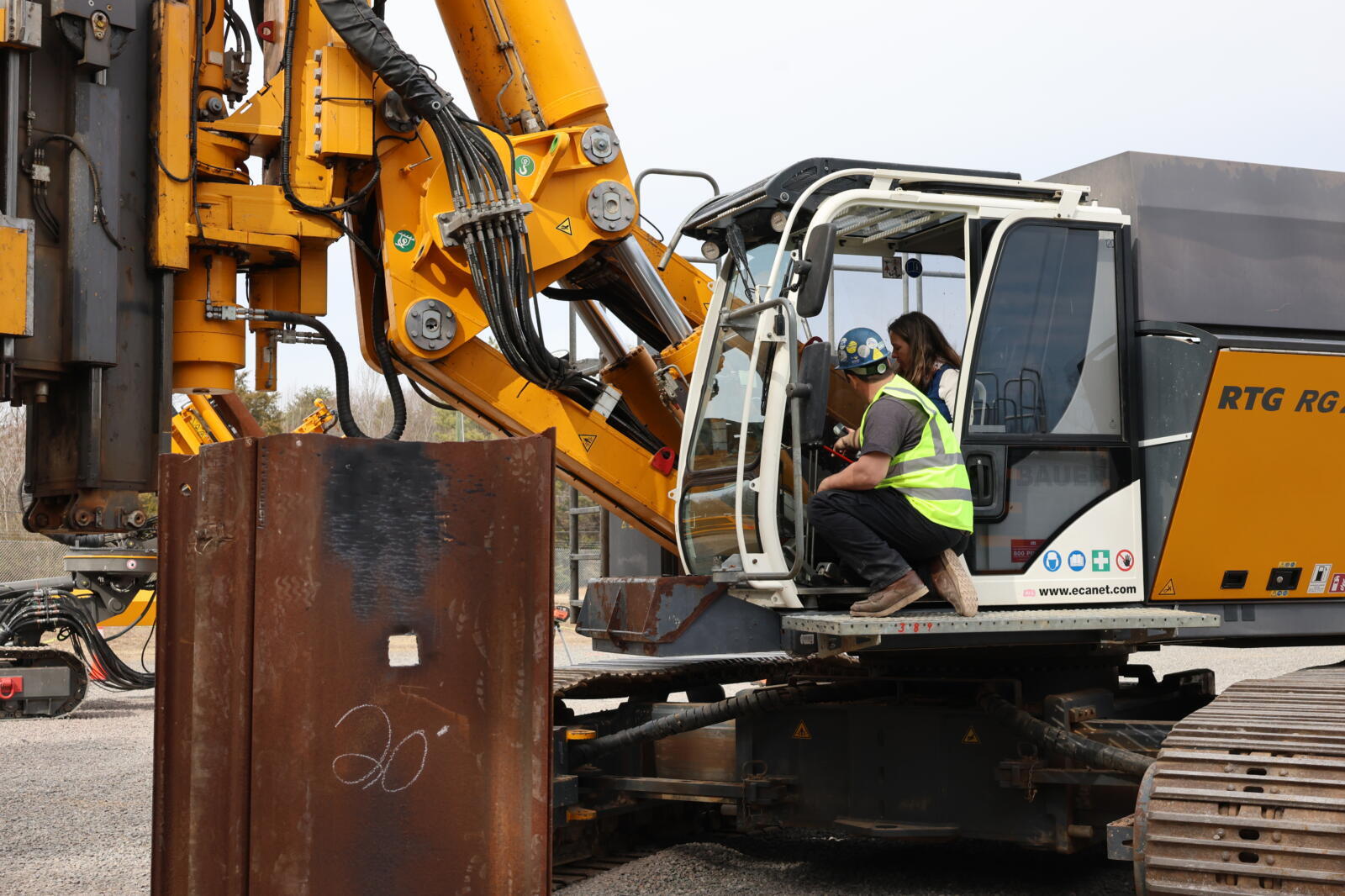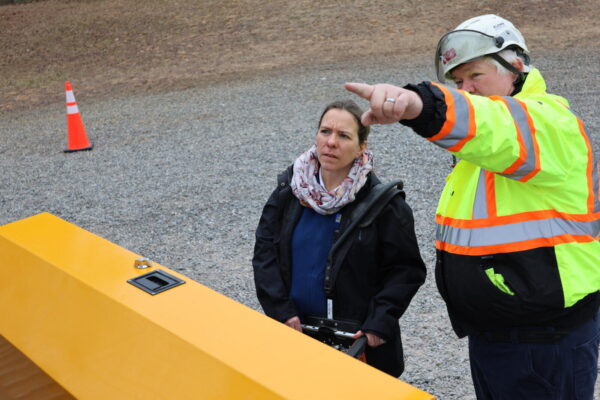Why Equipment Financing in Canada Isn’t the Same as in the U.S.—And What to Do About It
May 27, 2025

Note: An abridged version of this article was published in Geodrilling International's June 2025 issue.
by Anja Frazier & Matt Shelley
At first glance, it’s easy to assume that construction equipment financing in Canada would be almost identical to the United States. After all, the two countries are neighbors, share many of the same industries, and—if you include water bodies—are comparable in geographic size.
But once you look under the hood, the differences between the two markets become striking.
For starters, the U.S. population is nearly eight times larger than Canada’s. On the business front, Canada has approximately 1.2 million employer businesses, whereas the U.S. has over 32 million. The same trend appears in the banking landscape: Canada has around 100 banks, while the U.S. has nearly 5,000, creating a significantly more fragmented and diverse financial ecosystem. In contrast, Canada's financial market is highly centralized—five major banks dominate and collectively control over $6 trillion in assets.
With this in mind, it becomes clear: equipment financing in Canada is not the same as in the U.S.

"These are two separate countries,“ said Anja Frazier, CEO of Bauer Financial Services. “We have two separate legal systems, and some of them are very similar, but still different. So not every bank or lender is necessarily comfortable with equipment moving across borders. But in my 20 years I've learned there's always a solution to any problem. It's just a matter of talking about it and understanding the issues behind it and then finding a solution for it.“
In the heavy construction equipment sector, operating leases are a popular tool for companies looking to manage capex budgets or meet specific financial covenants. Under an operating lease, the financing company retains ownership of the asset and depreciates it on their books, while the lessee uses the equipment for a set period.
While lessees have the option to return the equipment at the end of the lease, most customers prefer to buy out the asset either early or at lease-end because of the typically high resale value and equity built up over time.
In theory, it’s a win-win. But in practice, especially in Canada, it’s more complicated.
Operating leases have been around for decades. But what sets the Canadian market apart is the challenge of valuing assets accurately and the way lease structures are built around that challenge.
“This is where the value of Bauer Financial Services, and working so closely with ECA really plays a big role,“ Frazier said. “Because with us, the lender really understands the equipment, the value behind it, the usage and how a construction company really operates and works from a financial perspective.“
In the U.S., equipment financiers rely on a robust resale data system of public auctions, detailed databases, and a steady volume of used equipment transactions. This allows U.S. lenders to forecast residual values with greater confidence and offer more flexible lease structures aligned with actual market values.
In Canada, reliable resale data is harder to come by, especially for long-lifespan equipment (8–20 years). As a result, Canadian financing companies tend to take a more conservative approach, using lower residual values or requiring manufacturer/dealer support to reduce risk. Support might include a residual value guarantee, buy-back agreement, or first-loss agreement.
And then there’s the curious case of the "magical 20 percent": Many commercial banks quote the same 20 percent residual value for a two-year lease as they do for a five-year lease. This leads to inflated monthly payments on shorter terms, which are often disproportionate to the asset’s market value.
Independent equipment leasing companies in Canada are generally more willing to take on residual risk than traditional banks. They’re also more open to capturing the upside at lease-end by selling the asset at market value to the lessee, which makes the overall investment unproportionately expensive. Alternatively, they will also consider selling the equipment on the open market.
But even they face limitations that don’t exist to the same degree in the U.S., where the secondary market is more liquid, asset valuation is more precise, and the financing culture tends to be more customer-driven and solution-oriented.
Bauer Financial Services and ECA have a history of working together to strategize the best financing options for our US and Canadian customers.
“Anja and her team at BAUER Financial Services have helped our company navigate the different financing options and make the best decision for our business,” said Jonathan Hazenburg, Vice President of Foundations at Aecon Group in Calgary, AB. “She understands the reality of our market and the flexibility needed to compete with major equipment.”
If you’re facing high monthly payments on a short-term operating lease in Canada, there are strategies to consider.
“In some cases, we’ve been able to negotiate longer lease terms with early buy-out options for our customers,” Frazier said. “This allows them to benefit from lower monthly payments while maintaining the flexibility needed to run their projects successfully.” Keep in mind, however, that leases typically don’t offer early payoff flexibility like loans do. Exit fees or penalties will usually need to be negotiated in advance. Expect some resistance—common responses include, “We don’t offer that,” “It’s never been done before,” or “That’s not possible.”
“In our business, visibility may be limited,” said Thomas Soria, Equipment and Finance Strategy Manager for Menard USA. “In this context, the financial services offered by Bauer allow us to minimize the investment risk with the early return option. We can evaluate the performance of the machine for 24 to 36 months to ensure it meets our high performance and safety standards before we buy it back. The service offered is also beneficial from a cash flow perspective.”
But don’t give up. Compared to the U.S., the Canadian leasing market is more traditional, but that doesn’t mean it's immovable. Tap into your vendor network, industry associations, or explore alternative lenders to find a more flexible partner.
BAUER Financial Services Inc. (BFINS) is the captive financing company supporting BAUER and ECA equipment sales across the U.S. and Canada. Over the past decade, BFINS has facilitated more than 300 customer transactions, closing over $300 million in equipment deals. It is a wholly owned subsidiary of BAUER Equipment America, Inc.
BAUER Financial Services Inc. (BFINS) is the captive financing company supporting BAUER and ECA equipment sales across the U.S. and Canada. Over the past decade, BFINS has facilitated more than 300 customer transactions, closing over $300 million in equipment deals. It is a wholly owned subsidiary of BAUER Equipment America, Inc.
ECA has been a leading supplier of foundation construction equipment for more than a century. We are the exclusive distributor for BAUER Drilling Rigs, KLEMM Anchor and Micropile Drilling Rigs, RTG Piling Rigs, and BAUER MAT Slurry Handling Systems. We also distribute HPSI Vibratory Pile Hammers, WORD International Drill Attachments, Pileco Diesel Hammers, Dawson Construction Products, ALLU Ground Improvement Equipment, Pile Master Air Hammers, DIGGA auger drives, and Olin Concrete Pumps. ECA offers sales, rentals, service, parts and training from 11 facilities throughout the Eastern U.S. and all Canadian Provinces.
